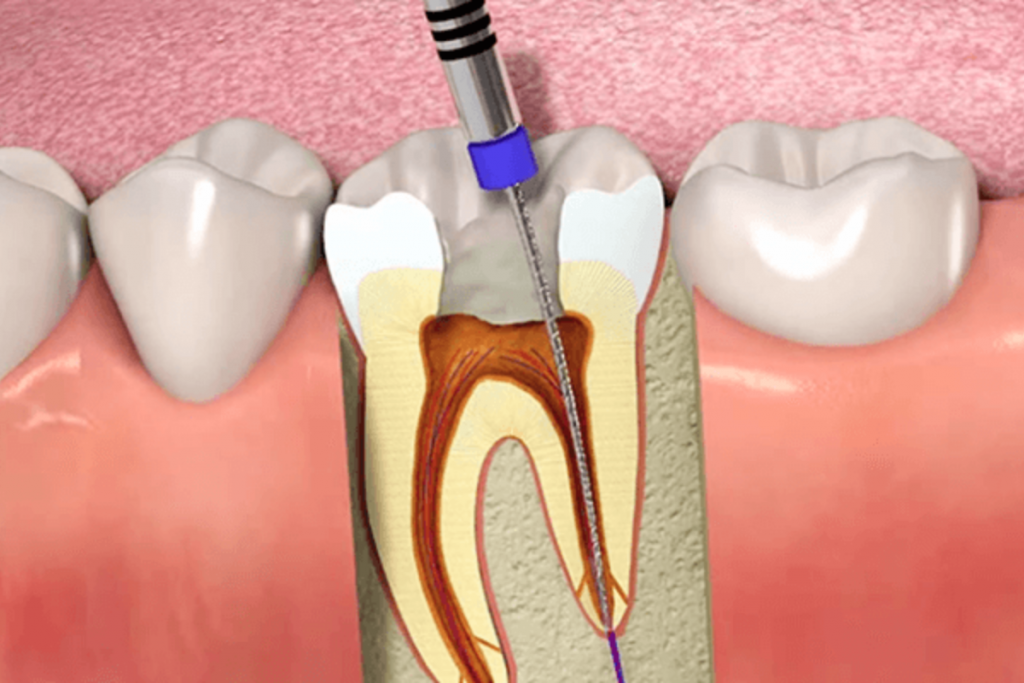Figuring out if you need a filling or a root canal can be confusing. They’re both usually meant to repair your tooth, but they have different situations and outcomes. Understanding the early signs of tooth pain, sensitivity, and damage can help you avoid pain and make the right decision. Typically, how bad the pain is, how sensitive the tooth is to hot and cold, and how much damage there is to the tooth structure are often the biggest clues. Not always, but in general, inner tooth infections are deeper than cavity fillings. The more significant the damage, usually, the more advanced the treatment. Understanding the difference between filling and root canal treatments helps patients take better care of their oral health.
How Is a Filling Different from a Root Canal?
Understanding the basic difference can help you know what to expect:
| Comparison Factor | Dental Filling | Root Canal |
| Purpose | Repairs minor tooth decay | Treats infection inside the tooth |
| Procedure Time | Quick (usually under 30 minutes) | Longer (may need 1–2 visits) |
| Pain Involved (With Numbing) | Minimal discomfort | Slight soreness afterward |
| Cost | Less expensive | More costly |
| Recovery Time | Few hours | A few days |
Both treatments are important, but which one you need depends on how deep the problem goes.
What Are Common Signs You Might Need a Root Canal?
Here are some easy root canal symptoms to watch for:
- Strong pain when you chew
- Tooth hurts with hot or cold things and doesn’t stop.
- Gums near the tooth look puffy or swollen.
- The tooth looks darker than the others.
- Small bump on your gums (could be an infection)
If you have any of these signs, a dentist in Lethbridge can look at your tooth and tell you what to do next.
When Is a Filling Enough to Fix the Tooth?
A filling is suitable when:
- The decay has not extended beyond the outer enamel or dentin.
- There are no signs of nerve damage.
- The tooth is not sensitive to heat, cold, or pressure.
- X-rays do not indicate any issue with the pulp.
If a cavity is small enough, it can be caught early on, and a filling can be done quickly and without any pain. For patients who need further care for deep decay, root canal therapy in Lethbridge is available to help stop the infection and save the natural tooth.
How to Tell If You Need a Root Canal vs. Filling?
Here are the key signs you need a root canal vs filling:
- Mild pain or no pain + visible cavity = Likely a filling
- Deep, lingering pain + gum swelling = Likely a root canal
- Discolouration or abscess = Root canal needed
- Small pit on tooth surface = Filling may be enough.
Only a dental exam and X-ray can give a definite answer. If you’re unsure, seeing a trusted dentist near you can help determine the right treatment.
How Does Tooth Pain Guide Your Treatment Needs?
Tooth pain and root canal treatment in Lethbridge can have different causes. Here’s how to understand the kind of pain you’re feeling:
- Sharp pain only when biting? It may be a cracked tooth or a cavity needing a filling.
- Dull, ongoing ache? It might be nerve inflammation, which is often a sign of a root canal.
- Sudden pain at night or while lying down? Infection may have reached the nerve.
- No pain but visible damage? Still worth a check; silent infections are common.
If any of these symptoms match yours, don’t delay. The earlier the diagnosis, the simpler the solution.
What Foods Should You Avoid After Treatment?
After getting dental implants or dental procedures like fillings or root canals, diet can help with healing.
Avoid:
- Hard food. It may crack fillings or disrupt healing.
- Sticky candy or gum. They can dislodge a temporary crown.
- Hot drinks can make your teeth feel more sensitive.
- Crunchy foods. These can agitate a sore tooth.
Check with your dentist for food that’s ok to eat after your procedure so you don’t face complications.
How Long Do Root Canals and Fillings Last?
Fillings can last 7–15 years, depending on the material and oral hygiene.
- A root canal with a crown can last many years, even a lifetime.
- Brushing well and visiting the dentist often helps it last longer.
What Can Help During Recovery?
Here are some dental implant recovery tips, which also apply to fillings and root canals:
- Take pain medications as recommended.
- Use a cold compress for swelling.
- Eat soft foods for 1–2 days.
- Chew on the other side of your mouth.
- Brush gently around the area.
Comfortable Solutions for Lasting Relief – Book Your Visit Now!
Not sure if you need a filling or a root canal? Look for signs like pain or infection. Visit Absolute Dental in Lethbridge, and our gentle team can help you feel better fast. Call now for a healthy, pain-free smile.
FAQs
Is it better to pull the tooth than get a root canal?
Saving your natural tooth is always preferred if possible.
Can children get root canals?
Yes, but it’s called a pulpotomy. It’s done on baby teeth to preserve them until natural loss.
What happens if I ignore root canal symptoms?
The infection can spread to your jaw, face, or even your blood, which can make you very sick.
Will I need a crown after a root canal?
Most likely yes. It strengthens the tooth and protects it from cracks.
